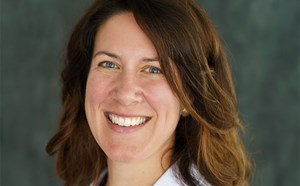
What’s New in the World?
Sure, by definition, abstracts are short. But how many have honestly read the 31 admin-related abstracts strewn throughout the Annals supplement from the 2019 Scientific Assembly? This article is a light-hearted and succinct summary of these abstracts, right in time for you to get excited about the upcoming 2020 Scientific Assembly. The number at the beginning of each line corresponds to the abstract number as published in the October 2019 Supplement to Annals of Emergency Medicine, Vol 74. Num 4.
- Provider tele-intake: with or without initial RN triage? For ~24k patients, the lack of RN triage in a tele-intake process was associated with an increase in length of tele-intake evaluation but a shorter time to provider with no difference in LWBS rate.
- The crystal ball of simulation: can a discrete event simulation (DES) model predict ops impact? YES! A 15-bed ED unit was converted into an admitted patient holding unit, and the DES predicted the LOS within 0.8%.
- Who doesn’t love a good BPA and order set combo? For these 11,573 septic patients, using both BPAs and order sets significantly lowered mortality rate (patients with both were 56% more likely to survive as compared to those who did not have BPA and order set used).
- The hunt for PEs: which docs have the highest positive scan rate? Academic physicians with five+ years in practice had the highest positive scan rate (vs. community sites and physician with <five years’ experience) in this multi-site study with 10,032 ED scans.
- Talk to the screen. 25% of the nearly 90,000 visits had tele-intake with no change in LWBS rates and a minimal but positive impact on time to provider (1.6 minutes).
- A little more physician intake may not be enough. Going from 16 to 24 hours of coverage had a greater impact on LWBS than the previous increase from 8 to 16 hours. A larger effect was seen when these hours were mapped to patient arrivals.
- Did you order that med on the wrong patient…again!?! This 11 ED system restricted the number of simultaneously open charts from four to two to reduce medication entry errors. In the six months pre and post, there was no statistical difference in the rate of entry errors (as identified by retract-and-reorder entries).
- Balancing the front-end and back-end: Studying over 466k ED visits, a PIT model enabled these EDs to increase their average daily census while decreasing their discharge pt LOS (L1ED 319 to 300; CED 241 to 233) and D2D time (L1ED 51 to 29; CED 58 to 40), while not changing their LWBS. Boarding time significantly increased despite PIT implementation, and the PIT did not decrease active patient care time.
- HS-Trops led to fewer obs stays, but more provocative testing in patients that stayed. Over the six-months studied, the proportion of patients placed in obs for ACS/monthly total ED census was 0.68% and 0.28% pre- and post-implementation, but there was an increase in the proportion of patients who were admitted to the hospital from obs post-implementation (25.0%) compared to before pre-implementation (16.3% Z¼ 4.3, p¼ 0.04).
- ACO patients…I see you! Creating a real-time ED report for case managers allowed rapid identification of nearly 27k patients of 101k patients over 12 months of ED visits. This process enabled ED-to-SNF for 27 of these patients over nine of these months.
- EM residents save brains. Of the 462 stoke activations studied, faster door-to-activations (DTA) were associated with arrival via EMS, resus room usage, higher stroke score, higher blood pressure, male patient sex, lower proportion of off-service residents, and higher ratio of emergency medicine residents. Independently increasing by one the number of emergency medicine residents per attending was associated with a 6.0% absolute increase (95% CI -0.5 to 18) in the DTA time.
- Ketorolac…when more than 10mg is too much. Literature supports a dose ceiling for ketorolac at 10 mg. Over the five years studied, the ordered amount was frequently 4.6 times the necessary amount to obtain ceiling dose analgesia (10,687 doses with 492,830 mg over the dose ceiling). Opportunities for provider educations abound.
- Have a HEART and use the HEART score. Low-risk chest pain HEART guideline non-adherence resulted in twice the number of patients undergoing urgent provocative testing with a significantly lower proportion of those patients having “abnormal” findings.
- Dependent care federal law NOT implemented locally. Researchers contacted the top 51 medical schools and found none had formally implemented the federal regulation that allows temporary dependent care costs for required research-related travel to be expensed to federal grants…possibly perpetuating gender inequalities in academic medicine. Should an abstract make you this sad?
- Alert!! EMR alert fatigue. Only 2.26% of EMR alerts during observed shifts significantly changed patient management. Most significant: allergy notifications.
- A little help from my friends. While physicians see the majority of ED patients from 2010-2015 nationwide, APPs see 7.4% of patients independently and 11% with a physician. APPs are seeing more ambulatory patients who are younger, less acute, receive fewer diagnostic tests, and have a lower LOS.
- A little help from other friends. When beds become full, and direct bedding is no longer possible, a modified direct bedding process with telemedicine providers, a default room per care area, and area captains reduced average time to full medical eval by over 15 minutes and reduced LWBS by 1.4 ppt.
- ICD-9 to ICD-10: impact to EDs. Reviewing over two million ED visits, this team found diagnosis distribution was unchanged (apparently, ICD-10 did not fix back pain!) but using ICD-10 resulted in fewer multiple-code visits and more unique codes utilization.
- Q30 min emoji selection to assess patient mood throughout ED stay. Using a 10-emoji scale, patients’ moods were assessed. No correlation was seen to wait times or LOS. Overall, emoji scores improved from ED admission to discharge.
- How angry…litigation-angry? From 2014-18, this 50K/year visit ED received 29.1 complaints per 10,000 visits and a litigation rate of 27.4 lawsuits per 10,000 complaints. Most lawsuits did not have a related complaint filed.
- How traumatic is trauma to the ED? Trauma activations were associated with prolonged imaging turnaround times for non-trauma ED patients (for orders placed within an hour of a trauma arriving: +15 minutes for image acquisition and +24 minutes prelim read).
- Does hospital crowding impact customer sat? YES! Both overall sat and provider-specific sat scores were strongly associated with hospital crowding (explaining up to over 50% of specific measure score variation).
- Is becoming a Geriatric ED a money pit? NO! For Medicaid or Medicare insured patients, properly billed geriatric consultations (Geriatric APN and a pharmacist) are cost neutral between seven-eight consultations per shift. 14 new walkers were cost-saving assuming prevention of a single fall.
- But, but, why are you leaving? For the nearly 300 patients that refused care (LWBS, left AMA, or eloped), these patients were significantly younger with lower triage level than controls. The top reasons cited included wait time, unmet expectations, and negative interaction with ED staff.
- Combating documentation delays. Using a structured process improvement framework, ED providers were able to significantly improve the percentage of notes signed >30 minutes of pt departure (62.2% to 86.6%).
- There is no “I” in T-E-A-M. Over the course of four months, 40 interdisciplinary rounding events in the ED identified 115 issues with 61 resolutions during the study. Employee sat increased by nine ppts and overall LOS decreased.
- It’s 9:00 pm…do you know where your ACEP clinical policies are? ED providers in 14 EDs were surveyed about their knowledge of ACEP clinical policies. Most were not very familiar, and respondents cited their review will impact future care and/or documentation.
- Pat sat: residents > attendings. In this 55K/yr ED, patients ranked satisfaction with resident care higher than attending care in all surveyed categories (courtesy, listening, comfort concern, informed on care).
- Urgent c is making appropriate referrals. In this nine-month study, 84.4k pt self-referred to the ED, and 572 were sent from urgent care. Pts from urgent care more likely to be admitted to the hospital, have longer evaluation periods in the ED, and require more extensive ancillary testing.
- Free-standing EDs are faster…mostly. Using 2017 ED Benchmarking Alliance data, freestanding EDs compared to hospital-based EDs have lower LOS, door-to-doc, door-to-bed, LWBS rates, and lower diagnostic study utilization. However, their admitted LOS and median boarding time were longer.
- Pull-to-full works. Pull-to-full contributed to an “immediate and sustained decline” in LWBS rates over the course of four years from 4.4% to <1%.
References
26. Changing the Model: Intake via Telehealth. Randolph F. Thomas Jefferson University, Philadelphia, PA
27. Expanding Your Operational Toolkit: Using Computer Simulation to Improve Flow. Lawrence A, Brown University, Providence, RI
28. Evaluating the Impact of Best Practice Advisories and Order Set Usage on Sepsis Patient Outcomes. Longinow C. Cleveland Clinic Akron General, Akron, OH.
29. Effects of Practice Site, Physician Experience, and Number of Tests Ordered Per Physician on the Diagnostic Yield of Computed Tomography Pulmonary Angiogram Ordered in the Emergency Department. Dubin J, MedStar Washington Hospital Center, Washington, DC
30. Emergency Department Tele-intake Is Comparable to In-person Intake. Randolph F. Thomas Jefferson University, Philadelphia, PA.
31. Impacting Emergency Department Left Without Being Seen Rates Through Physician Resourcing. Theiling BJ. Duke University Hospital, Durham, NC.
52. Limiting the Number of Open Charts in the Electronic Medical Record Does Not Decrease Order Errors in the Emergency Department Canfield C. Cleveland Clinic, Cleveland, OH
58. Utility of Physician-in-Triage Intake Model to Mitigate the Impact of Boarding on Emergency Department Operational Efficiency. Ali S. Brown Emergency Medicine, Providence, RI
59. Effect of High Sensitivity Troponin Implementation on Emergency Department Observation Unit Operations McGrath A, Duke University, Durham, NC
60. Immediate Identification of Medicare Accountable Care Organization Patients Across a Health System’s Emergency Departments. Phelan MP, Cleveland Clinic, Cleveland, OH
61. Association between Trainee Supervision and Timeliness of Emergency Department Stroke Care. Michael SS, University of Colorado School of Medicine, Aurora,CO
62. Ketorolac in the Emergency Department: Analysis of Use and Waste Silva J, Wright State University, Dayton, OH
63. The Incidence and Downstream Effect of Guideline Non-Adherence: The HEART Score in the Community Hospital Emergency Department Setting. Nygren M, Oakland University Wlliam Beaumont School of Medicine, Rochester, MI
64. Implementation of Federal Dependent Care Policies for Physician Scientists at Top US Medical Schools. Ormseth C, UCSF, San Francisco, CA
90. The Impact of Electronic Medical Record Alerts on Emergency Physician Workflow and Clinical Decision-making. Shinthia N, Beaumont Health, Royal Oak, MI
91. Advanced Practice Provider Utilization in United States Emergency Departments; 2010 to 2015. Wu F, University of California San Francisco - Fresno, Fresno, CA
92. Does a Modified Direct Bedding Model Improve Door-to-Provider Time and Throughput in an Otherwise Resource Constraint Emergency Department? Chang B, NYP-Columbia University Medical Center, New York, NY
93. Coding Disparity and Specificity during Emergency Department Visits after Transitioning to the Tenth Version of the International Classification of Disease. Jerrard DA, University of Maryland, Hunt Valley, MD
94. Can Emoji’s Assess Patients’ Mood and Emotion in the Emergency Department? An Emoji-Based Study. Quan T, George Washington University, School of Medicine and Health Sciences, Washington, DC
95. An Analysis of Patient Complaints at a Community Teaching Hospital’s Emergency Department and Its Correlation to Litigation. Almeida VM, Monmouth Medical Center, Long Branch, NJ
120. How Traumatic Is Trauma to the Emergency Department? Assessing the Impact of Trauma Operations on Non-trauma Emergency Department Patients. Kumar S, University of Chicago, Chicago, IL
121. The Association of Hospital Crowding With General and Physician-Specific Customer Service Scores. Rabin E, Icahn School of Medicine at Mount Sinai, New York,NY
122. Designing a Financially Sustainable Geriatric-Friendly Emergency Department. Tseng P, The Ohio State University Wexner Medical Center,Columbus, OH
123. Refusal of Care in the Emergency Department Setting: Patient Perspectives. Bryant M, Wright State University Boonshoft School of Medicine,Dayton, OH
124. Note Signing Timeliness Significantly Improves after Completion of a Documentation Improvement Initiative. Salzman JG, Regions Hospital, St. Paul, MN
125. IDR: Interdisciplinary Daily Rounds or Inefficient Distribution of Resources? Nelson M, North Shore University Hospital, Manhasset, NY
150. American College of Emergency Physician Clinical Policy Guidelines, Close Friends or Aloof Strangers? Schwartz BE, Prince George Hospital Center, Alexandria, VA
151. The Patient Experience: Satisfaction with Care in the Emergency Department. Espland J, St Luke’s University Hospital, Bethlehem, PA
152. Resource Utilization of Patients Referred to the Emergency Department from an Urgent Care Center. Podlog M, Staten Island University Hospital, Northwell Health,Staten Island, NY
153. Freestanding Vs. Hospital Based Emergency Department Utilization and Throughput Metrics Across the United States. Simon E, Cleveland Clinic Akron General, Akron, OH
155. Implementation of a Direct Bedding Strategy Results in a Rapid and Sustained Reduction in Left without Being Seen. Martin JA, Trinity Health of New England, Hartford, CT
By Tom Spiegel, MD, MBA, MS, FACEP
Chair-Elect, Medical Directors Section
ED Medical Director, University of Chicago



